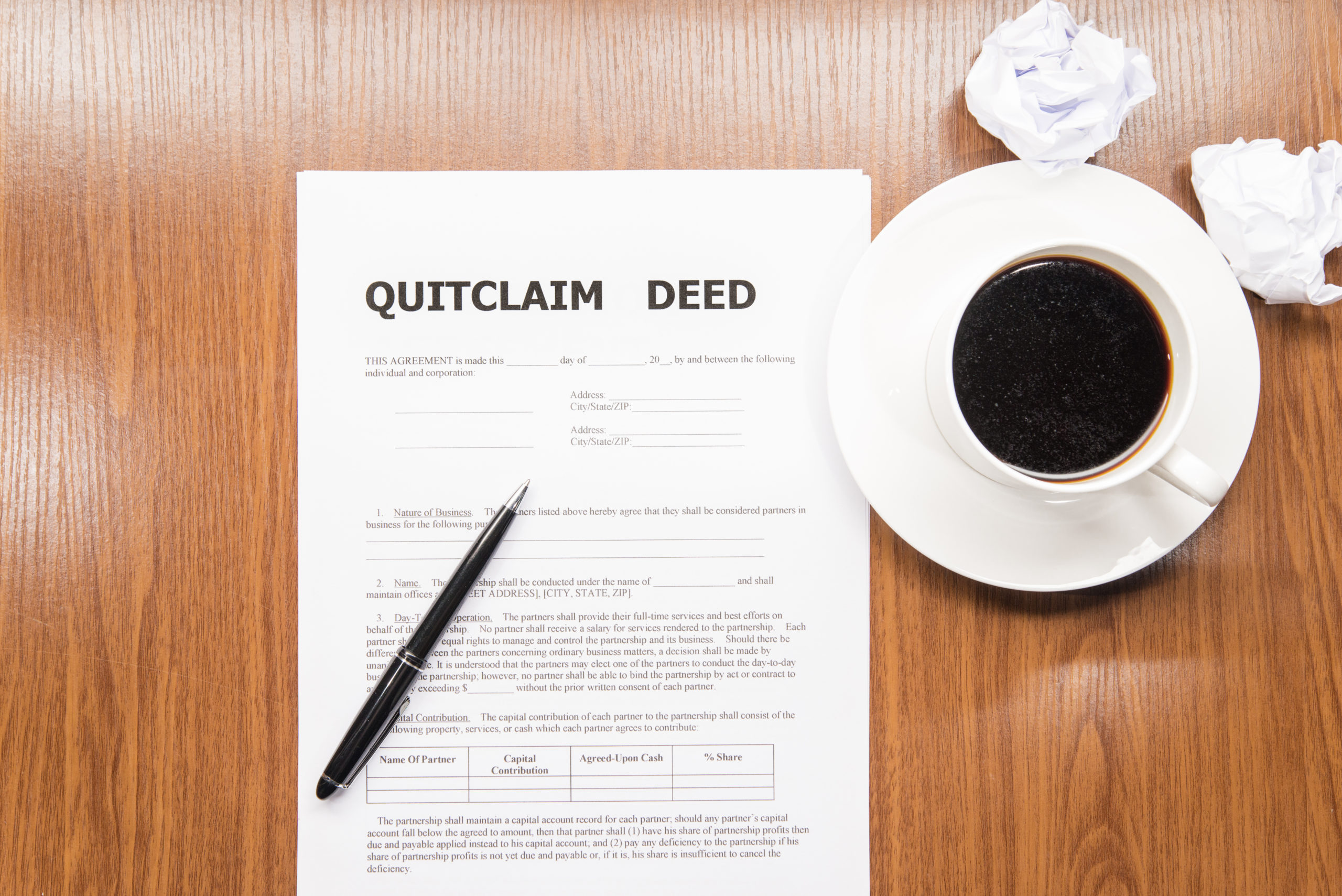Have you ever heard of a quitclaim deed? This is often used if you’re transferring property between family members or spouses.
Read more to learn about what a quitclaim deed is and when you need to obtain one.
What is a quitclaim deed?
When you purchased your property, you signed and received a deed. This deed you received is a warranty deed or a quitclaim deed.
A quitclaim deed is used when a property transfers ownership without being sold. This means no money is involved in the transaction, no title search is done to verify ownership, and no title insurance is obtained.
This is typical for Real Estate transactions between family members.
Why use it?
Quitclaim deeds are a quick way to transfer property.
For example, if an owner gets married and wants to add a spouse’s name to the title or deed, or get’s a divorce and wants to remove their name, then a quitclaim deed would be used.
This deed can also be used when parents transfer property to their children or when siblings transfer property to each other.
Another time a quitclaim deed might be used is when a title insurance company finds a potential additional owner of a property and wants to make certain that this person doesn’t make a future claim of ownership.
A quitclaim deed impacts only the ownership of the house and the name on the property deed or title, not the mortgage.
For example, in the case of a divorce, if both ex-spouses’ names are on the mortgage loan, then they’re both responsible for the mortgage payment, even if a quitclaim deed is obtained.
The basics
The rules on how a quitclaim deed is handled vary by jurisdiction.
However, generally, you need to include the legal description of the property being transferred. Along with the date of the transfer, and the names of the “grantor” and “grantee.”
Be sure to check with your state’s laws. Not all states require you to record a quitclaim deed. But it’s wise to have the deed signed by the grantor and grantee. Then have it notarized and filed at the county clerk’s office.
Do I need one?
Instead of a traditional sale, quitclaim deeds are quick and easy.
If you want to transfer a home to your children or you recently got married, it might make sense to use this to transfer or add a name to the property.
One benefit of using a quitclaim deed is that it avoids a title search and title insurance.
How do I create one?
Quitclaim deeds must be in writing to be valid. It must include the property address, date of transfer, location, and the names of those involved.
This type of document is typically notarized and filed with the county clerk where the property is located.
If you’re getting married, divorced, or transferring property to a family member, look at the basics of a quitclaim deed and determine if it’s right for you.

